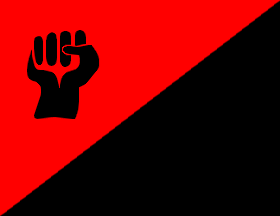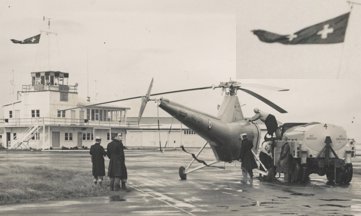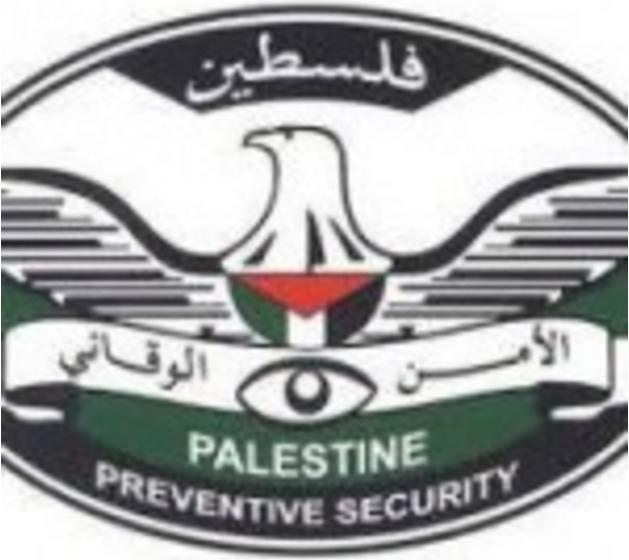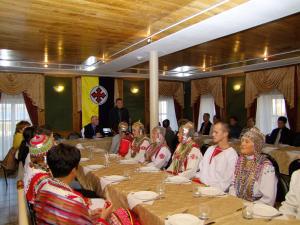 zachary harden
zachary harden
Keywords: ufe | unidentified flags | 2013 |
Links: FOTW homepage | search | disclaimer and copyright | write us | mirrors

FOTW beschäftigt sich mit der Wissenschaft der Vexillologie (Flaggenkunde).
Alle auf dieser Website dargebotenen Abbildungen dienen ausschließlich der Informationsvermittlung im Sinne der Flaggenkunde.
Wir distanziert uns ausdrücklich von allen hierauf dargestellten Symbolen verfassungsfeindlicher Organisationen.
Last modified: 2023-06-03 by  zachary harden
zachary harden
Keywords: ufe | unidentified flags | 2013 |
Links: FOTW homepage |
search |
disclaimer and copyright |
write us |
mirrors
Please note our Policy for Submissions and Enquiries.
Below is a series of images of flags that have been provided to FOTW; some we have recognized, and some we have been unable to recognize. If you can help us identify any of these flags, please let us know! Contact the: UFE Editor.
Identification Key:
 Image from Aristobulo Lima, 19 October 2013
Image from Aristobulo Lima, 19 October 2013
Do you know what this flag is, I saw it outside a church in Brazil.
Aristobulo Lima, 19 October 2013
I regret I do not recognise this flag. Can you provide any background information about this flag - did you see it yourself, and if so, in what location?
Rob Raeside, 19 October 2013
I'm not quite sure, but I saw this flag in front of a church in a small town in Northeast Brazil. Nobody in town knew what the flag was. It wasn't the flag of the city, it was not the state flag, and neither was it a flag of Brazil. The locals told me that the priest would know the meaning of the flag, but he was not there when I was.
Aristobulo Lima, 22 October 2013


Photo taken 25 October 2013, Image by Pete Loeser & Tomislav Todorovic, 27-28 October 2013
While watching the 6 O'clock News coverage (25 Oct 2013) of the newest Occupy sponsored (encouraged?) protest in Oakland, California, I spotted a strange flag being flown there. It appeared to be an Anarcho-Syndicalists Flag with the addition of a black power fist in the red diagonal stripe. The protester seemed to be waiving it at a group of uninterested Oakland police who were standing by as the protesters marched from the front of the Oakland Marriot Hotel to a nearby police station. The press has named the demonstration the "Urban Shield Protest" because apparently there is a police convention (seminar?) being held at the Marriot discussing the issue of urban protest and violence and ways to protect the public and it's property.
Anyway, does anybody recognize this flag or know or a group using it?
Pete Loeser, 25 October 2013
 #47a
#47a
 #47b
#47b
Photos from Kim Dunstan, 28 October 2013
I'm involved with a naval history web site as a contributor and I'm having difficulty finding out the meaning of the pennant in the attached photo (#47a). Could it be number 26 which is the duty runway or a ‘restricted flying’ pennant? (my guesses).
The photo, circa 1950, shows the control tower at the Royal Australian Navy Air Station at Nowra, Australia. The pennant appears to be two white crosses on a dark field. The only thing like it on your web site is a Number 6 pennant which has black crosses on a white field in the 1913 section.
I've been in touch with quite a few people who were in the RAN Fleet Air Arm at the time but nobody has the answer, also trawling through the web has not provided the answer, except I saw a similar pennant in a photo (#47b) featuring a Canadian Navy Wren standing next to a flag pole dressed with flags.
Kim Dunstan, 28 October 2013
This is "corpen" or "course pennant", a Royal Navy signal flag in use until the NATO system was adopted in 1950. At sea it was used to signal the order to turn in succession, or wheel. On land it probably had a non-standard local meaning. The corpen may have been flown to indicate "gliding in progress". The symbol for this in airfield signal squares is a horizontal white bar with two small vertical cross bars. Split in two, this would be two white crosses. See Double White Cross. (Click on "Read more about the more modern Signal Area" at bottom of page for photograph.)
David Prothero, 29-30 October 2013
Latest from Kimberley Dunstan, who sent the question: "The ‘gliding in progress’ suggestion is an idea that hadn´t occurred to me, however I don´t think there was any gliding conducted at the air station at that time and the weather looks unsuitable for gliding. But I will keep that in mind. A friend of mine says he saw a similar pennant in a photo of a WW2 RN air station in Ceylon which suggests it has a very specific naval application."
David Prothero, 2 November 2013
I got a lead from an old navy friend who told me the information would be found in the A.P.(N) 76 Regulations for Fleet Air Arm. Checking with the FAA Museum at Nowra, I received the following reply:
"Found in the AP. Part 5 - Under Aerodrome visual signals, was the following description: 'A double white cross Interpretation: gliding is in progress or winged targets are being operated. Aircraft are not to taxi or take off without special permission. Landing is prohibited except to those aircraft which are making special visits or are forced to land in emergency or are operating from the aerodrome.'"
As this description is from an authoritative source, I think we can consider the mystery solved. It was also helpful receiving your copy of the 1937 Seamanship Manual colour plates. The fact the pennant was discontinued after 1950 probably explains why nobody recognised it.
Kim Dunstan, 13 November 2013
 Image from William Garrison, 30 October 2013
Image from William Garrison, 30 October 2013
Hopefully you can identify the attached flag, supposedly of some unknown Hamas flag, but the "eagle" logo seems to be that of Egypt or Syria.
William Garrison, 30 October 2013
This image is a Reuters photo take on June 13, 2007. Back then, there was discussion of the flag. The discussion can be found as "Unidentified Possible Police or Security-Forces' Flag."
Andy Shelton, 3 November 2013
This picture was taken by Returers photo journalist Mohammed Salem. The image (source) and reproduced in the following websites: Image #2 and Image #3 (source). In this picture (which one can actually appreciate in bigger format than the one on our pages) shows that the bottom stripe bearing the Arabic inscription is not separate from the black disc as the GIF we have (FOTW Image) but rather attached, in yellow outline. It was labeled back then (as the picture caption reads) as follows: "A Palestinian Hamas militant places a Hamas force flag on top of headquarters of security forces loyal to President Mahmoud Abbas after they seized it in Gaza June 13, 2007."
The image is also found on our Palestinian pages, "Unidentified Possible Police or Security-Forces'Flag."
I'm more likely to believe the flag was mistakenly labeled as a Hamas flag due to the occupation forces of Hamas of Fatah outposts back in the 2007 Gaza invasion as part of the Fatah-Hamas conflict. However, this flag could be that of the "Executive Force", a parallel security force made up of al-Qassam Brigades members, after Fatah, refusing to accept the plan of the Hamas-led PA government to reform the security sector after the Palestinian legislative election of 2006, established its own security force, the Presidential Guard, although the main Fatah force that fought in this conflict was the Palestinian National Security Forces.
The picture in question was most likely taken after "[Hamas] Fighters seized Fatah's Preventative Security building in Gaza City and the intelligence service headquarters" (source) - notice
that Preventive Security was labelled as a Fatah controlled Unit during the Fatah-Hamas conflict but it is agency of the Palestinian Authority, as a whole. It is worth noticing that the first chief of this "Executive Force" was also a leader in the PRC (source #1) (source #2). It also is important to notice that this Unit was created in the particular period of the Fatah-Hamas conflict specifically when the Interior Ministry it was headed by a Hamas member (after it won the 2006 elections) but has no permanent status as an independent force
(a common practice in the Palestinian-Israeli conflict of temporary groups and Units by the Palestinian side). It was outlawed by the President (a Fatah leader) in January of 2007 and it seemed to have lasted (as a semi independent Unit) until December of that year.
As for Palestinian Security Forces, they were outlined by the Oslo Agreement signed in 1993, and were officially established in May 1994 "with the signing of the Gazaââ¬âJericho Agreement, "a chapter in the Oslo Accords process" (source). Also the Oslo II Accords contains Article II of Annex I which stipulates:
"The Palestinian Police is the only Palestinian security authority." The Annex allows a security force limited to six branches:
 Image from Esteban Rivera, 18 April 2016
Image from Esteban Rivera, 18 April 2016
PPS logo cropped image from Ramallah News.
 Image from William Garrison, 30 October 2013
Image from William Garrison, 30 October 2013
Hmmmm, yellow Hizbollah flag in background. The Green flag seems to have image of Iraq border, with a Lebanon flag. Maybe an ISIS variety?
William Garrison, 30 October 2013
The image was taken on July 21, 2006. It, and others from the same march, can be found at Getty Images. The caption of the photo is: "Baghdad, IRAQ: Armed members of radical Shiite cleric Moqtada al-Sadr's armed movement, Mehdi Army, carrying assault rifles and rocket propelled grenades and waving Lebanese and Hezbollah flags parade through the Baghdad Shiite district of Sadr City 21 July 2006. More than 300 Mehdi Army militiamen paraded in solidarity with Lebanon's Shiite militia of Hezbollah currently battling Israel in southern Lebanon." The photo credit should read "WISSAM AL-OKAILI/AFP/Getty Images."
I presume the green flag represents al-Sadr's Mehdi Army. It, like Hezbollah, is a Shia group. It would be in conflict, not alliance, with a Sunni group like ISIS.
Andy Shelton, 3 November 2013
The Mehdi Army, sometimes known as al-Dajjal Army or Jaysh al-Mahdi, is an armed movement that appeared in 2003. The name refers to Mahdi, a long-since disappeared Imam who is believed by Shi'a Muslims to be due to reappear when the end of time approaches. The tradition mentions that prophet Muhammad said that the advent of the Mahdi would be signaled by "Black Standards" proceeding from
Khorasan. Hence the use of black flags referring to Jihadists movements. This group has periodically engaged in violent conflict with the United States and other Coalition forces, while the larger Sadrist movement has formed its own religious courts, and organized social services, law enforcement, and prisons in areas under its control. Part of the support and relation among this and other groups is that there are some SGs (Special Groups) a designation given by the American military to the cell-based Shi'a paramilitary organizations operating within Iraq, backed by Iran. According to the Americans these groups are funded, trained, and armed by the Iranian Quds Force, part of the
Sources: Mahdi_Army ,
Muqtada_al-Sadr ,
Quds_Force ,
Abu_Bakr_al-Baghdadi and
Special Groups (Iraq).
Esteban Rivera, 17 June 2014
To add further information on this topic I am sending some more information and images. The Mahdi Army, or JAM (Jaysh al-Mahdi) has evolved into the Promised Day Brigades and then into the Peace Companies (Saraya al-Salam), frequently mistakenly still called "Peace Brigades" in United States media. They are an Iraqi armed group linked to Iraq's Shia community. The Peace Brigades were created by the Iraqi Shia cleric Muqtada al-Sadr in June 2003 and disbanded in 2008 only to be revived since 2014 in the much more broad sense of a Popular Mobilization Forces (al-Hashd al-Shaabi). The Peace Companies emerged again in 2014 replacing the Promised Day Brigades into a much more elaborate network of cooperation under the People's Mobilization (Forces).
The People's Mobilization (Forces) (al-Hashd al-Shaabi), also known as the National Mobilization (al-Hashd al-Watani), and as the Popular Mobilization Forces/Units/Committee (PMF/PMU/PMC), is an Iraqi state-sponsored
umbrella organization composed of some 40, mainly Shiite, militias (there also Sunni, Christian, and Yazidi groups). The People's Mobilization was formed for deployment against the Islamic State of Iraq and Syria.
The organization was formed by uniting existing militias under the "People's Mobilization Committee" of the Iraqi Ministry of Interior in June of 2014. Despite being a force outside the Iraqi regular armed services, militants of the Popular Mobilization Forces openly reject the qualification of "militia".
This framework of cooperation is coordinated by the Iraqi State and acts (loosely) as a confederation of forces, of which the three main driving forces are: "The League of the Righteous" (As-saib Ahl al Haq), "Hezbollah Brigades" (Kata'ib Hezbollah) and the
"Promised Day Brigades" which evolved into the "Peace Companies" (Sources: Popular Mobilization Forces (Iraq) and Peace Companies and Special Groups (Iraq), and other lesser groups, such as the Badr Organization and the Battalion of the Sayyid's Martyrs (Kata'ib Sayyid al-Shuhada - KSS) in Iraq.)
Now, back to Mahdi Army: we feature the above image, sent to the list by William Garrison. He mentions the original source to be Getty images. Here are a few more of those pictures (all of them were taken in Baghdad Shiite district of Sadr City, July 21, 2006):
- Image #1 (flag in the middle) and (source)
- Image #2 (flag in the middle) and (source)
- Image #3 (flag in the middle) and (source)
- Image #4 and (source)
- Image #5 and (source).
The flag is a horizontal green flag, with the map of Iraq in the middle in white outline, with fourteen white rays coming out of the center of the Iraq map outwards, with an Iraqi flag in the right corner, and below the Iraq map, two crossed white swords (most likely a type of scimitar) with the black grip.
Esteban Rivera, 27 March 2016
 #49a
#49a
 #49b
#49b
Images from Randy Young, 1 April 2016
I attempted to create of the first two Popular Mobilization Forces flags that Esteban listed in his E-mail - the current logo on the white field (#49a) and the previous yellow flag with the red logo (#49b). Unfortunately, I was not able to gif the red flag with the inscription that he also linked in his E-mail. I'll keep trying, though, and hopefully be able to come up with a reasonable facsimile in the future. Please let me know if there are any changes or corrections that need to be made to the attached graphics.
Randy Young, 1 April 2016
Should not such an extensive explanation of the Mehdi Army and the Popular Mobilization Forces be placed on this respective Iraqi page?
Esteban Rivera, 18 April 2016
 Image from Esteban Rivera, 5 December 2013
Image from Esteban Rivera, 5 December 2013
Could someone please identify the first flag from left to right
Esteban Rivera, 5 December 2013
Must be the Shanghai Cooperation Organization
Nachum Lamm, 5 December 2013
And what about the second one from right to left? Looks like Pakistani flag with the field repainted into blue.
Tomislav Todorovic, 5 December 2013

This is the German Signal flag Rot (Red), once used on World War II Army training manuvers. It is now located with the German Signal Flags.
 Image from Thanh-Tâm Lê, 28 December 2013
Image from Thanh-Tâm Lê, 28 December 2013
On the not often updated English-language version of the chuvash.org website, one can still see a picture from 2010 with a (to me) unknown flag in the background. It definitely does not look like the Chuvash
national flag in any of its variants. Would you have an idea of what it stands for?
Thanh-Tâm Lê, 28 December 2013
Hosted by: Fanshop-Online.de und Handy-Shop.de
Tipp: Apple iPhone 15 im Shop